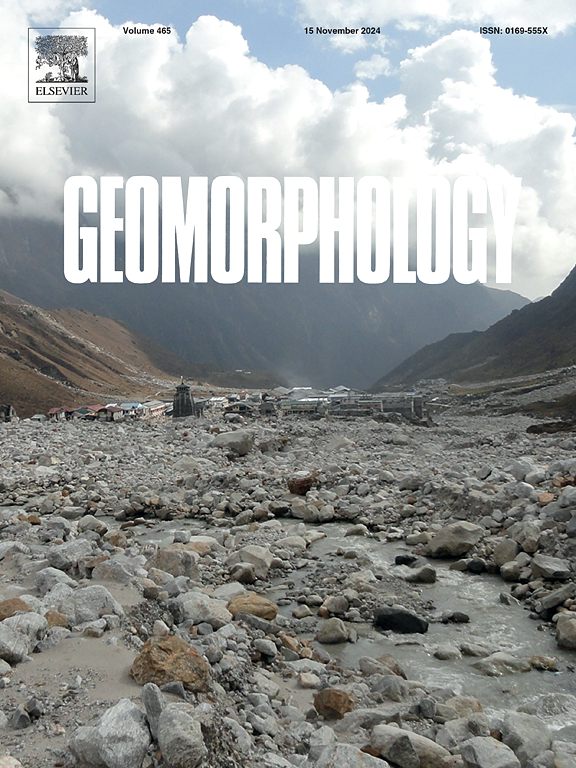Turbulent structures at the bottom of the Gobi desert boundary layer and their impact on aeolian sand transport and dust emission
Liang, Linhao , Ma, Shaoxiu , Zhang, Weimin , Tan, Lihai , Liu, Weiqi , Tsunekawa, Atsushi
2025-03-01 null null 472(卷), null(期), (null页)
The Gobi Desert (GD) is one of the mixed sand-gravel desert surfaces in the arid regions of northwest China, where turbulent convection develops vigorously and is one of the major dust sources in Asia. However, the turbulence structures at the bottom of the GD boundary layer and its impact on sand transport and dust emission are poorly understood. In this paper, based on field systematic measurements of two different wind directions dust storm events in the GD, the classified turbulence structures within 0.4 m of the GD boundary layer and its influence on the sand transport rate and dust emission flux are investigated using the quadrant analysis method. We found that the classified turbulent structures at the bottom of the GD boundary layer contributes >90 % of the Reynolds shear stress, similar to 50 % of the sand transport rate, and similar to 70 % of the dust emission flux with a time frequency of 54 %-55.8 %. The turbulent structures over GD surface are less affected by wind direction and the turbulent flow is more conducive to dust emission and diffusion than the sand transport. The height of the monitoring point affects the time share of different behaviors in the turbulent structure, where outward interactions (Q1: u' > 0, w' > 0) and ejections (Q2: u' < 0, w' > 0) are the most frequent behaviors at the bottom of GD boundary layer, accounting for >60 % of the total time frequency in classified turbulent structures. The streamwise fluctuation wind speed (u' > 0) plays an important role in the sand transport in the GD boundary layer, and the positive vertical pulsation component (w' > 0) is more favorable to the diffusion and transport of dust. The GD boundary layer classified turbulence structures are distinctly different from flat surfaces such as sandy desert and farmland, exhibiting turbulent behaviors similar to that of water flowing over gravel riverbeds.
相关推荐
- Investigating the impact factors of dust emission efficiency over gobi with portable wind tunnel field experiments [2025-03-01]
- Vegetation restoration in dryland with shrub serves as a carbon sink: Evidence from a 13-year observation at the Tengger Desert of Northern China [2025-03-01]
- Quantifyting research on the protection effect of a desert-oasis ecotone in Dunhuang, Northwest China [2025-03-01]
- A data-driven high spatial resolution model of biomass accumulation and crop yield: Application to a fragmented desert-oasis agroecosystem [2025-03-01]
- Estimating the sand saltation thresholds from Sentinel-1 SAR data in the Gobi Desert, Mongolia [2025-03-01]



